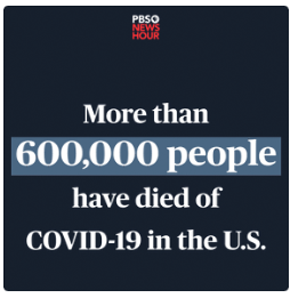Trump Admin Inches Closer to Unprecedented Drug Price Transparency Requirements
-
Jun 05, 2025
The Trump administration on May 22 revealed multiple initiatives to improve health care price transparency, including updating guidance for health plans to publish data and seeking public input via requests for information (RFIs). Kolton Gustafson, an Avalere Health principal, tells AIS Health the announcements are “very significant for both plans and pharmaceutical manufacturers,” although he notes it is still to be determined whether they will lead to lower prices for health care services and prescription medications.
The administration said the moves by HHS, along with the Labor and Treasury departments, will strengthen the Transparency in Coverage (TiC) rule, which was finalized in November 2020 and required health insurance companies to publicly post in-network rates, out-of-network allowed amounts and other data, as well as the Hospital Price Transparency rule, which was finalized in November 2019 and required hospitals to publicly disclose gross charges, cash prices, negotiated rates and other information.
Gustafson says the most significant part of the recent announcement pertained to an RFI that HHS and the Labor and Treasury departments issued about the prescription drug file data requirements that were part of the TiC but have never been implemented. He notes that health plans since July 2022 have publicly disclosed machine-readable files on rates with in-network providers as well as billed charges and allowed amounts that plans pay for services furnished by out-of-network providers. However, the requirement for plans to disclose machine-readable files with negotiated rates and net prices with in-network providers and pharmacies for medications has been delayed, which is partly due to lawsuits that were filed in August 2021 by the U.S. Chamber of Commerce and the Pharmaceutical Care Management Association.
While Gustafson notes that “it’s possible we’ll still see some legal challenges now that they’re moving forward,” he says he expects the prescription drug file requirements could go into effect as early as next year.
“This is a level of transparency around drug pricing and discounts that we don’t really see,” Gustafson tells AIS Health, a division of MMIT. “We sometimes see reporting on some of these trends in aggregate. But the idea that we’re going to see specific negotiated rates that are available to providers for individual drugs within individual plans, that’s a lot of granularity that we actually haven’t seen before. The aim, of course, is to give more information around not only changes in drug pricing, but also the level of rebating and discounting that occurs on those products.”
Executive Order Calls for Better Enforcement
The recent announcements from the administration follow an executive order that Trump signed in February imploring HHS and the Labor and Treasury departments to implement and enforce regulations requiring the disclosure of actual health care prices — not just estimates — and issue guidance on pricing information.
Besides the prescription drug RFI, the agencies this month released updated guidance to health plans on the TiC rules about the machine-readable files. They are seeking to decrease duplicative data within the files by requiring plans to: list provider groups only once, have a table of contents for plans or policies that share negotiated rates, and disclose provider network information. The agencies said they will finalize the technical guidance on Oct. 1 and require plans starting on Feb. 2, 2026, to comply with the requirements related to in-network rates, out-of-network allowed amounts and billed charges.
“Transparency empowers individuals to make well-informed health care decisions for themselves and their families,” Deputy Secretary of Labor Keith Sonderling said in a press release. “The departments’ actions today execute President Trump’s mission to address rising health care costs by promoting competition in the marketplace.”
CMS Issues Guidance on Hospital Price Transparency
On the same day that the Trump administration released the new proposed TiC requirements, CMS released updated guidance on the Hospital Price Transparency rule, which hospitals have been slow to comply with.
The agency is now requiring hospitals in most cases to post their payer-specific negotiated charges as a dollar amount rather than an estimate. The document noted that there are some instances where the charge is quoted as a percentage of a fee schedule that is not available to the hospital. In those cases, CMS said that hospitals should “provide additional information about the type of fee schedule in the appropriate additional notes data element and encode an estimated allowed amount.”
Story continues after the infographic…
The guidance also requires hospitals to publicly disclose other standard charges, including gross charge, discounted cash price, de-identified minimum negotiated charge and de-identified maximum negotiated charge. In addition, CMS said it defined the estimated allowed amount for an item or service as “the average dollar amount that the hospital has historically received from a third-party payer.” In circumstances where the hospital does not have the historical data, such as when it is negotiating with a new payer, CMS should calculate the estimated allowed amount as “the average dollar amount the hospital has received for an item or service, derived from electronic remittance advice transaction data using data from items or services rendered within the 12 months prior to posting the file.”
CMS also released an RFI seeking input on improving compliance with and enforcement of the Hospital Price Transparency rule. The agency is seeking comments through July 21.
Plans, Providers May Balk at New Requirements
Gustafson says that some health plans and providers are “probably not thrilled” with the Trump administration’s renewed focus on price transparency initiatives. He adds that insurers are “the main party that may be aggrieved by having to publish” granular drug-pricing data because it takes a lot of time and collaboration with their PBMs to collect and post the data, and it may help their competitors.
“You are making public negotiated rates for certain products and services, and that generally has been thought of as private trade information,” Gustafson says. “You want to protect your competitive advantage, so allowing your competitors to see exactly what you’ve negotiated has sometimes been met with resistance, but that’s also balanced against this desire for greater transparency and consumer understanding of how we get to the prices that are paid.”
Even after the plans disclose more data, Gustafson says most people still will not be able to access or evaluate the information, although third-party companies will aggregate the data to sell it and share it with researchers. He also observes that it is unclear whether more disclosure will decrease what people and plans pay for health care services and medications.
“I think that’s the big question. I don’t think it inherently leads to lower prices. It could lead to more similar prices, or it could lead to strategic decision-making to better place your product relative to competitors.”
This article was reprinted from AIS Health’s weekly publication Health Plan Weekly.
© 2025 MMIT












